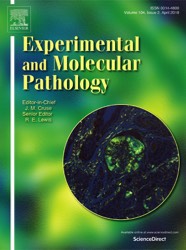HCC: miRNA profiles of the tumor-surrounding tissue

The HCC patients were significantly older than the patients with cirrhosis only (B: 60.6 and A: 49.9, p<0.001) and showed higher levels of ALT (A: 0.76μkat/l, B: 1.02μkat/, p=0.006) and AFP (A: 5.8ng/ml, B: 70.3ng/ml, p<0.001), whereas the bilirubin levels were higher in the cirrhosis only group (p=0.002). Using age (cut-off 50.23years) and AFP (cut-off 4.2ng/ml) thresholds, the levels of expression of miR-1285-3p and miR-943 differentiated between the patients with HCC and cirrhosis from those with cirrhosis only with an accuracy of 96.3%. This is the first report about the use of stepwise penalized logistic regression and decision tree analyses of miRNA expressions in the tumor-surrounding tissue combined with clinical parameters for the diagnosis of HCC.
Authors are Mehmet Haluk Morgul, Sergej Klunk, Zografia Anastasiadou, Ulrich Gauger, Corinna Dietel, Anja Reutzel-Selke, Philipp Felgendref, Hans-Michael Hau, Hans-Michael Tautenhahn, Rosa Bianca Schmuck, Nathanael Raschzok, Igor Maximillian Sauer, and Michael Bartels. Exp Mol Pathol. 2016 Aug 20;101(2):165-171. doi: 10.1016/j.yexmp.2016.07.014. [Epub ahead of print]

